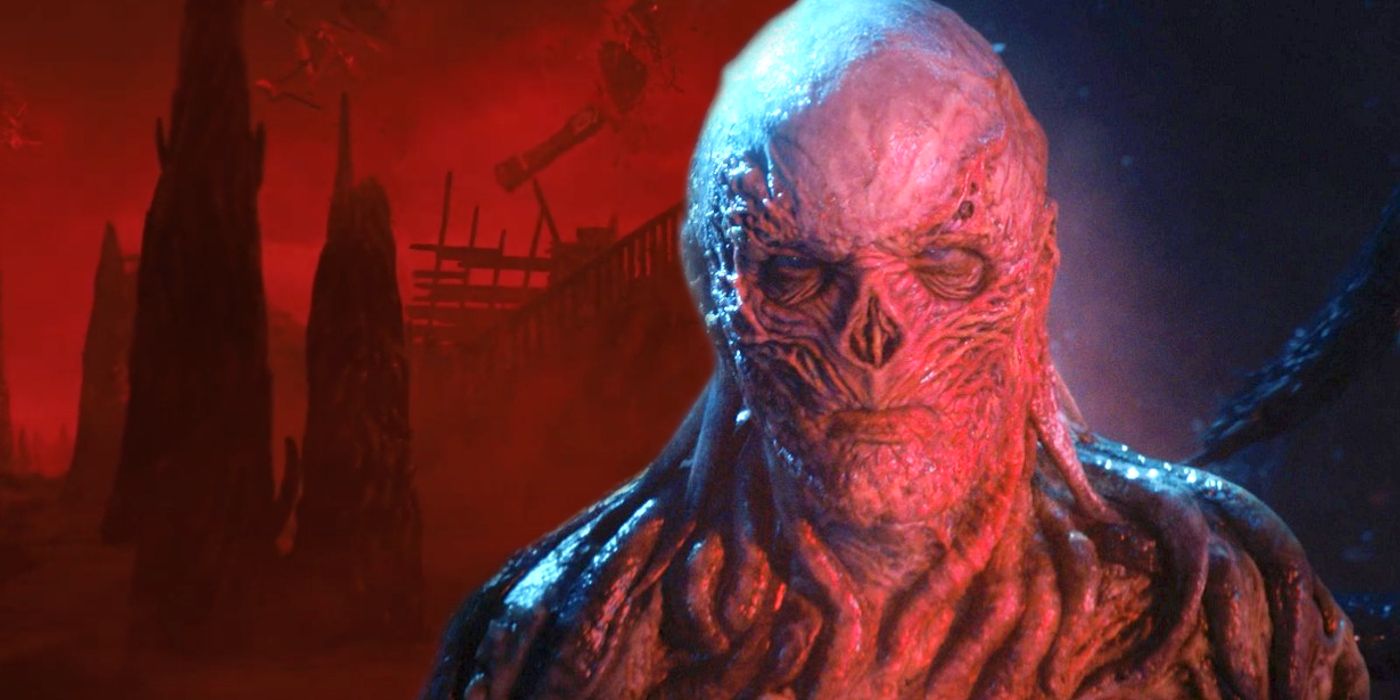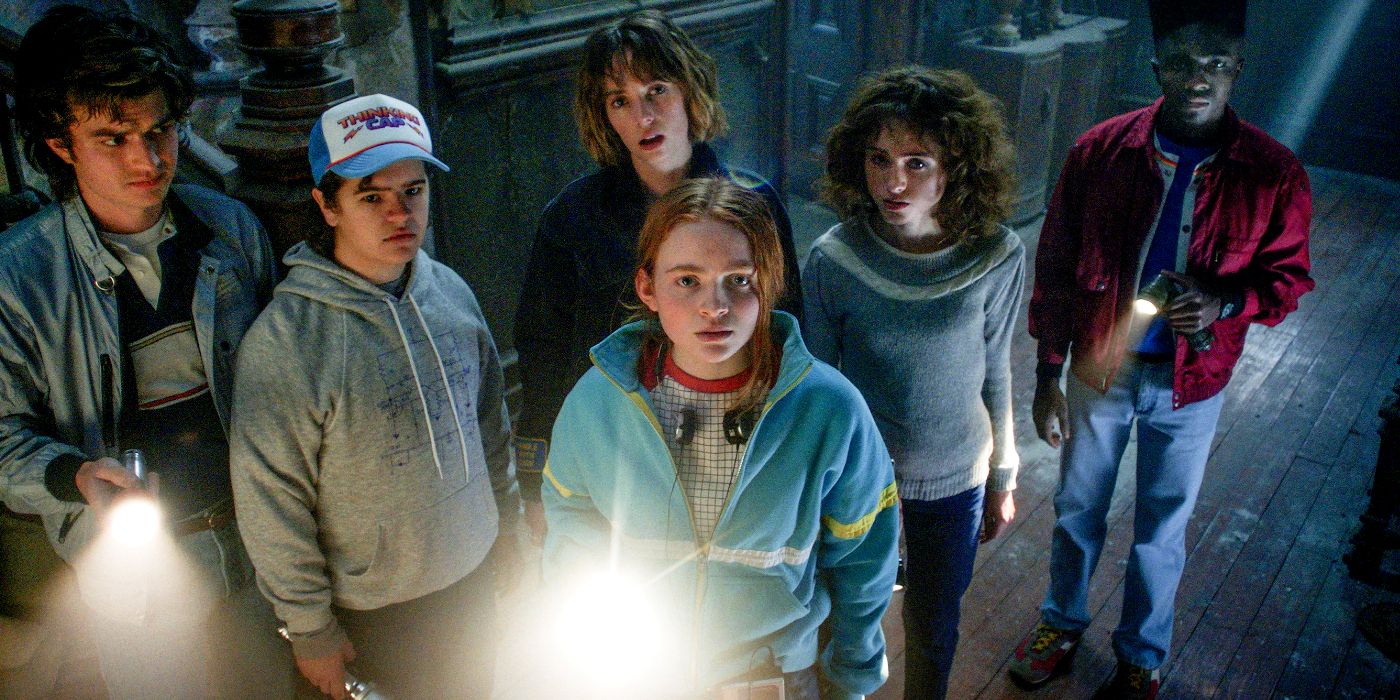
Warning: SPOILERS for Stranger Things season 4.
Through the clever characterization of its villain, Stranger Things season 4 is able to subtly flip an overused horror trope. Stranger Things has proven to be not just one of Netflix's most popular original series, but a cultural phenomenon, too. Drawing clear inspiration from the classic horror stories of Stephen King, as well as visual and thematic elements of the horror movies of the '80s and '90s, Stranger Things has used excellent storytelling and breathtaking visuals in order to secure massive popularity.
The villain of Stranger Things season 4 is Vecna, a distinctly humanoid villain with powers that reach across dimensions to curse and kill the teenagers of Hawkins. The use of Vecna as season 4's villain is a slight shift for Stranger Things, as previous antagonists have been more eldritch creatures born of the Upside Down. Vecna is revealed in Stranger Things season 4 to actually be Henry Creel, a human with powers not unlike Eleven's who uses them (and an Upside Down-influenced power upgrade) to murder unsuspecting teens.
Vecna being a human villain (albeit a powerful, transformed one) is actually a clever way to subvert a horror trope popularized by the very films that inspired Stranger Things. Though Stranger Things is packed with horror references, its use of a human villain who appears to be a monster is a subtle inversion of the characterization of some of the '80s biggest horror villains. Many of the most iconic horror villains appear to be human but are defined by their supernatural otherness, whereas Vecna is actually the opposite as Stranger Things season 4 reveals.

All of the most memorable villains from the horror movies that inspired Stranger Things share similar stories with Vecna in many ways. Freddy Krueger, Jason Voorhees, Leatherface, and Candyman - to name just a few - all started out as humans before they struck terror into the hearts of audiences everywhere. That similarity is key, as it helps Stranger Things' Vecna feel like a true horror villain, but the subtle finer details are key in helping the Netflix series invert the most common trope regarding those villains.
Most horror movies focus on their villains' supernatural side for their scarier elements, usually by making them impossible to kill. In doing so, those villains begin to seem distinctly less human than they appear, essentially becoming supernatural beings in (more or less) human form. Stranger Things' reveal of Henry Creel as Vecna at the very end of Stranger Things season 4, volume 1 works to achieve the opposite, as the villain is first established as a supernatural threat, then later revealed to be human in origin. This subverts the trope by having the odds seem insurmountable at first, and only later introducing the idea that Vecna is potentially more vulnerable than he seems.
In this way, Stranger Things season 4 fixes a mistake from previous seasons while simultaneously setting the show apart from its horror movie inspirations. By subtly inverting the ideas of the very films that inspired its atmosphere, Stranger Things is able to continue to feel fresh and innovative with regard to its story and its villain. Making Vecna secretly more human than he initially appears to be is a clever way for Stranger Things to improve upon the overused tropes of the horror movies that it relies upon.
Stranger Things season 4, volume 2 premieres on July 1.
Want more Stranger Things season 4 articles? Check out our essential content below...
- Stranger Things Season 4 Volume 1 Ending Explained (In Detail)
- Stranger Things Season 4 Volume 2 Release Date (& How Many Episodes Are Left?
- Why Eleven Doesn't Have Her Powers In Stranger Things Season 4
- Stranger Things Season 4 Cast & Character Guide
- Stranger Things' Vecna Identity, Powers & Origin Fully Explained
- How Hopper Survived Stranger Things Season 3's Ending
- How Many Kids Were In Hawkins' Lab (& How Many Are Dead)
- What The Grandfather Clock Means In Stranger Things Season 4
- Stranger Things Season 4 Volume 1 Easter Eggs & References
source https://screenrant.com/stranger-things-season-4-horror-trick-perfect/

No comments:
Post a Comment